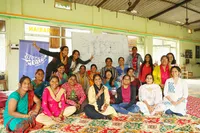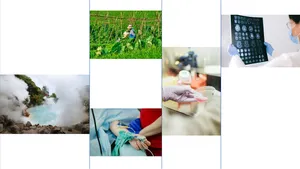From rural India to the world: These women make the news

Editor’s note from Ludovic Blecher, Head of Google News Initiative Innovation: The GNI Innovation Challenge program is designed to stimulate forward-thinking ideas for the news industry. The story below by Harshita Verma, outreach and comms lead for Khabar Lahariya, is part of an innovator series sharing inspiring stories and lessons from funded projects.
Worldwide, people in major cities faced shortages of luxury provisions such as meat and alcohol due to supply chain disruption caused by the pandemic, but some in India’s rural areas couldn’t even get the basics and were sending desperate messages across social media about not eating for days.
At Khabar Lahariya, we have been embedded in rural areas for close to 20 years, so this ‘hunger pandemic’ was an important story for us and the communities we cover. Our team of mostly young women live and breathe our work in the thick of the community of Northern India that we serve.
We’ve created ways for international organizations, such as universities and NGOs, to subscribe to our content on a ‘bulk’ basis, where organizations purchase a subscription for their employees, students or partners. This is helping us solidify our revenues and give our work a profile on national and global platforms. Our journalism is clearly resonating more widely – to date, we’ve sold 125 of these “corporate” subscription plans.
Simultaneously, we have revamped the subscription package at Khabar Lahariya so that it offers more than just in-depth multimedia stories. Our material focused on young people — including girls, caste minorities, gender minorities and LGBTQI — and quickly increased our subscriber base by just over 10%. Plus we have accumulated over 13,000 followers on Instagram.
We are also gaining recognition for our work in other areas of the media where it has been featured in the award-winning documentary Writing with Fire, described by the Washington Post as “the most inspiring journalism movie - maybe ever.”
We’ve nurtured a loyal audience base from the rural north, of which 60-70% is between 18-34 years old, and we’re planning campaigns to convert more of these young people into subscribers.
These results continue to give us confidence in our dream and vision. For our next steps, we intend to provide training resources so that our readers can improve their skills to wield digital and social media effectively, and thus become more engaged citizens.






